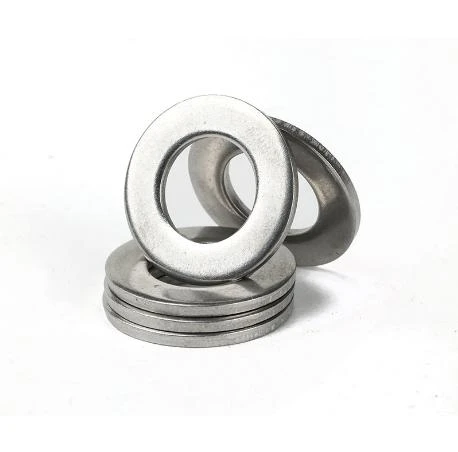

self tapping screws into wood
ธ.ค. . 16, 2024 06:44 Back to list
self tapping screws into wood
The Art of Using Self-Tapping Screws in Wood
When it comes to woodworking, one of the most significant breakthroughs has been the advent of self-tapping screws. These screws have revolutionized the way we join materials together, providing a quick and effective solution that eliminates many of the challenges associated with traditional fastening methods.
What Are Self-Tapping Screws?
Self-tapping screws are designed to create their own hole in the material when driven in. They feature a sharp tip and a thread design that enables them to cut into the base material, which can be wood, metal, or plastic. Unlike regular screws, which require a pre-drilled hole, self-tapping screws save time and effort, making them a favorite among DIY enthusiasts and professional woodworkers alike.
Advantages of Self-Tapping Screws in Wood
1. Ease of Use One of the most significant advantages of self-tapping screws is their ease of use. With traditional screws, you often need to measure and drill pilot holes, which can be time-consuming and require additional tools. Self-tapping screws simplify this process, allowing you to drive them directly into wood with a drill or screwdriver.
2. Time Efficiency In projects where time is of the essence, self-tapping screws can be a game-changer. By reducing the number of steps involved in fastening materials, they can significantly speed up the assembly process, making them ideal for large projects like furniture building or frame construction.
3. Strong Hold The design of self-tapping screws allows them to grip firmly in the wood, providing a strong hold that can withstand tension and shear forces. This makes them suitable for applications where durability is essential, such as cabinetry or structural components.
4. Versatility Self-tapping screws come in various sizes, shapes, and thread patterns, making them suitable for a wide range of applications. Whether you're building a simple bookshelf or constructing a more complex wooden structure, there's likely a self-tapping screw that fits your needs.
Tips for Using Self-Tapping Screws in Wood
self tapping screws into wood

1. Select the Right Screw Choosing the correct size and type of self-tapping screw is crucial for achieving the best results. Consider the thickness of the wood and the load it will bear. For example, larger and longer screws are ideal for thicker or heavier materials.
2. Use a Drill Although self-tapping screws can be driven manually, using a power drill with the appropriate bit can make the process quicker and reduce the risk of damaging the screw or the wood. Ensure that the drill is on a low setting to prevent over-driving the screw, which can strip the wood or break the screw.
3. Pilot Holes While self-tapping screws don’t typically require pilot holes, creating a small pilot hole can be beneficial in harder woods or for large screws. This helps reduce the risk of splitting the wood and allows for more precise placement.
4. Pre-Attaching Components If working with multiple components, consider pre-attaching them before driving in the screws. This way, you can ensure that everything is aligned properly, minimizing the risk of misalignment once the screws are in place.
5. Check the Angle When driving self-tapping screws, keep the screwdriver or drill at the correct angle (usually 90 degrees to the surface) to ensure that the screws go in straight. This will enhance the hold and prevent issues like stripped threads.
Common Uses
Self-tapping screws are commonly used in various woodworking applications, including
- Furniture Assembly They provide a robust solution for assembling pieces like tables, chairs, and cabinets. - Outdoor Projects Their durability makes them suitable for projects exposed to the elements, such as decking or fencing. - Crafts and DIY Projects Hobbyists appreciate self-tapping screws for their convenience and reliability in various crafting situations.
Conclusion
In summary, self-tapping screws represent a significant advancement in fastening technology for woodworkers. Their ease of use, time efficiency, and strong holding capability make them indispensable tools in any woodworking kit. By following best practices and utilizing these screws effectively, you can enhance the quality and efficiency of your woodworking projects, whether they are small DIY crafts or extensive structural undertakings. As you incorporate self-tapping screws into your skills repertoire, you’ll find that they open up new possibilities for creativity and innovation in woodworking.
Latest news
-
High-Strength Hexagon Nuts: Secure & Reliable Fastening Solutions
NewsAug.27,2025
-
Full Thread Studs: Max Strength & Secure Fastening Solutions
NewsAug.26,2025
-
Secure Threaded Fasteners: Steel, Titanium, Wall, Wood Solutions
NewsAug.21,2025
-
Durable Brass Fasteners: Quality Solutions for Every Project
NewsAug.19,2025
-
High-Strength Hot Dip Galvanized Bolts - Hebei Longze Metal Products Manufacturing Co., Ltd.|Corrosion Resistance, Customizable Sizes
NewsAug.18,2025
-
Hot Dip Galvanized Bolts - LongZe | Corrosion Resistance, High Strength
NewsAug.18,2025

